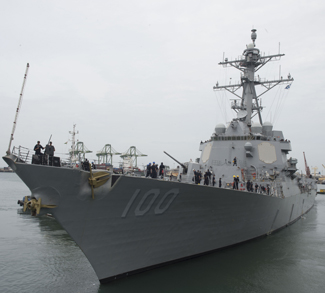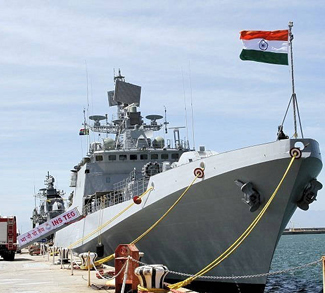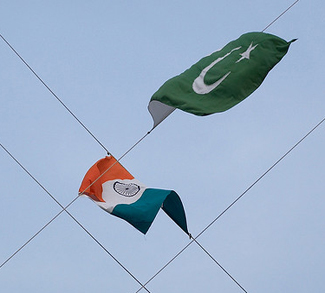The Chinese naval presence in the Indian Ocean Region (IOR) has been a worry for not only India but also the United States, as the latter has a military base in Diego Garcia. Japan too has been apprehensive of China’s naval assertiveness in the East China Sea. It was these concerns that resulted in India, United States, and Japan conducting the annual Malabar exercise in July 2017. The Malabar exercise was initially a bilateral naval exercise between the Indian Navy and the United States Navy. However, growing relations between India and Japan saw Japan become a permanent member of the Malabar exercise in 2015. The Japan Maritime Self Defence Force participates in the exercise along with the Indian Navy and the US Navy.
The exercise has a crucial significance. All three states participating in it do not share cordial relations with China; in fact, Japan and India are entangled in territorial disputes with China. In addition, China’s military, defense, and nuclear cooperation with Pakistan, along with its silence over the North Korean nuclear impasse, have concerned both India and Japan respectively. The North Korean nuclear crisis has been a concern for the United States as well, and President Trump has been very public in his disappointment with China on the North Korea issue.
Therefore, the maritime exercise between United States, Japan, and India is a strategic signal aimed at China. For the United States, India is a reliable partner to counter China in the IOR. While India on the other hand is aware that it needs more naval power in the IOR to counter China. Definitely, it cannot bank on Russia at the moment, as the Russians are not militarily capable of exerting their influence in the Asian periphery. The Russians have also demonstrated a desire to focus their power and influence exertion on Europe. Also, Russia and China share cordial relations. Hence, the United States is the only trustworthy partner for India to bank on.
The Indian Navy aspires to develop a ‘blue water capability’ as stated in the maritime doctrine of 2015.
Warships, submarines, and naval aircraft became were the main components in the Malabar exercise. Aircraft carriers were also used this year for the first time. The exercise also included displays of anti-submarine warfare and reconnaissance capabilities. This presence of anti-submarine warfare capabilities is crucial for India, especially as a Chinese submarine was spotted in the IOR just prior to the commencement of the Malabar exercise. Moreover, China’s Belt Road Initiative (BRI) has also not been viewed by India positively, and India has also refused China’s offer to join in on its landmark initiative.
The exercise was conducted in the Bay of Bengal with an aim of enhancing maritime cooperation between the three states.
In terms of aircraft carriers, the Indian Navy displayed their INS Vikramaditya with its air wing, the U.S. Navy displayed its Nimitz-class carrier with its air wing, and Japan displayed its helicopter carrier, the JS Izumo. For missile destroyers, the Indian Navy displayed its Ranvir class, while the U.S. Navy displayed its Arleigh Burke-class destroyers, and Japan displayed its JS Sazanami missile destroyers. For submarines, one Russian-made Sindhughosh-class submarine and a Los Angeles-class attack submarine were took part from the Indian Navy and the U.S. Navy respectively.
The Indian Navy also dispatched its stealth frigates Shivalik and Sahyadri to participate in the exercise. Amongst long range maritime patrol aircraft, the Indian Navy displayed the U.S. made patrol aircraft P8I and the U.S. Navy displayed its P-8A. India also utilized its anti-submarine warfare corvette Kamorta and missile corvettes Kora and Kirpan as well as fleet tanker INS Jyoti during the exercise. The U.S. Navy fielded its Ticonderoga-class cruiser Princeton. Japan displayed its SH-60K helicopters during the exercise.
The Indian Navy has increased its presence in the IOR in the recent times. There is a reason for this. Presently, 95 percent of India’s trade by volume and 68 percent by value come via the Indian Ocean. India imports 3.28 million barrels of crude oil per day via the Indian Ocean. India’s dependence on the sea for oil imports is about 93 percent. Moreover, 45 percent of India’s liquefied natural gas (LNG) comes by sea. In the event of a conflict, the Indian Navy would play a crucial role in protecting India’s energy supply lines.
The Indian Navy aspires to develop a ‘blue water capability’ as stated in the maritime doctrine of 2015. It also has aspirations to strengthen its presence in the Bay of Bengal, Arabian Sea, Persian Gulf, Gulf of Oman, Gulf of Aden, Red Sea and also strategic points like the Strait of Hormuz. The Indian Navy in the recent times is also increasing its presence in the Malacca Strait, which is closer to the Andaman and Nicobar Islands.
Here’s the US strategy in the Indian Ocean:
- In the IOR, the U.S. perceives threats not just from state actors like China and Iran, but also from non-state actors like terrorist and criminal networks, nuclear non-proliferators, etc.
- The U.S. wants to counter Chinese naval influence.
- Though U.S. may shift its focus toward East Asia and away from the IOR due to changes in defense spending.
- The U.S. seeks help from countries like India and Australia in the IOR to make up for any capability gaps.
Japan’s interest in the Indian Ocean also needs to be taken into consideration. Japan has taken up the task of renovation and construction of eight major ports in the IOR. Japan has increased its Foreign Direct Investment (FDI) in the IOR remarkably. Investments in the IOR for Japan would be a medium to counter Chinese influence in the region. Japan is also keen to foster greater defense cooperation with IOR countries. In 2016, there were also reports that India and Japan desired to create connectivity from the Pacific to the Indian Ocean. To achieve all this, Japan needs to possess naval prowess in the IOR. Since 2001, the JMSDF has stationed destroyers and refueling ships in the IOR. Military ties with India are helping Japan to boost its naval presence in the IOR as well as will enable Japan to protect its sea lanes of supply. Japan’s sea lanes of supply in the South China Sea would be disturbed by Chinese naval presence and hence, Japanese maritime presence in the IOR would redress this weakness by “placing for the first time, Chinese sea lanes of supply under threat from independent Japanese maritime action.”
In conclusion, the recent Malabar exercise conducted by the U.S., India, and Japan benefits the three countries by helping to exert greater influence in the IOR. This could help alleviate concerns of a Chinese dominance in the IOR to a considerable extent.
The opinions, beliefs, and viewpoints expressed by the authors are theirs alone and don’t reflect any official position of Geopoliticalmonitor.com.




